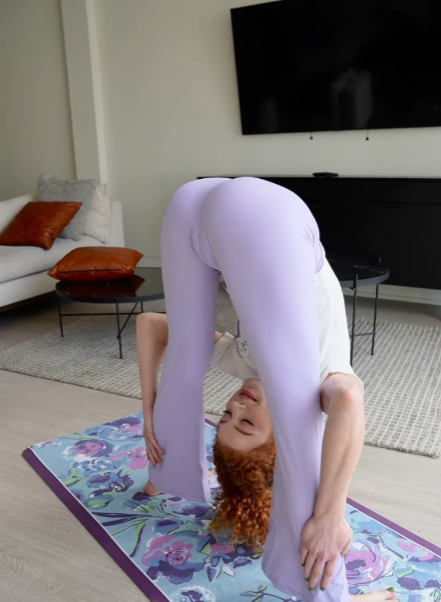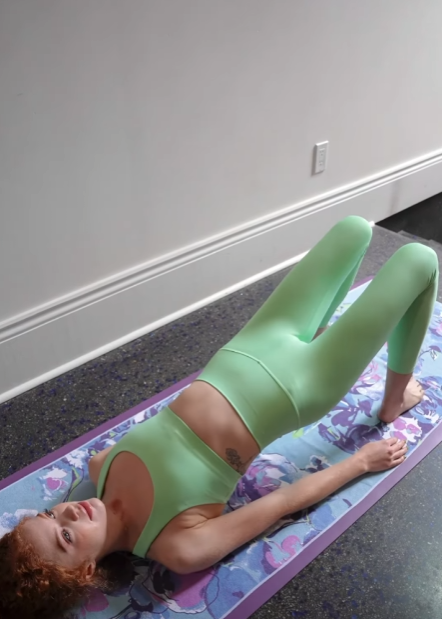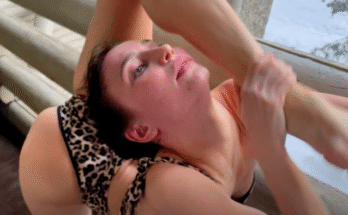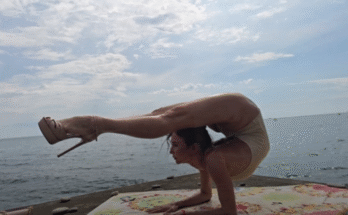
Yoga has long been celebrated for its ability to connect mind, body, and spirit, offering a sanctuary from the chaos of daily life. Among its many poses, the snail pose, or Krounchasana in Sanskrit, stands out for its gentle yet profound ability to stretch the spine, shoulders, and hamstrings. While the traditional snail pose provides a deep stretch and encourages flexibility, exploring variations can unlock new dimensions of strength, balance, and mindfulness. In this article, we will dive into a thoughtful exploration of a variation on the snail pose, its benefits, and how to approach it with mindfulness and safety.
The snail pose is inherently a forward-bending posture that focuses on elongating the spine and opening the shoulders. Typically, in the classic snail pose, practitioners sit with their legs extended and slowly fold backward, allowing the spine to curl gently toward the floor. It is a posture that demands both patience and body awareness, as it stretches the back muscles while stimulating circulation and calming the mind. However, for those seeking to deepen their practice or address specific areas of tension, incorporating variations can make the pose more dynamic and beneficial.
One notable variation involves the gentle twisting of the torso while maintaining the fundamental backward fold. This twist introduces a rotational element to the spine, engaging the obliques and improving spinal mobility. To begin, sit in the traditional snail pose with your legs extended forward and your back rounded toward the floor. Once comfortable, slowly introduce a twist by shifting your upper body slightly to the right, allowing your left hand to reach toward the outside of your right leg. The right arm can extend overhead or gently rest behind you for support. This subtle adjustment not only enhances flexibility in the thoracic spine but also encourages mindful breathing, as the body adapts to the new alignment.

Another variation focuses on the integration of leg positioning. By bringing one leg into a bent position, similar to a modified pigeon posture, you can deepen the stretch in the hip flexors while still maintaining the spinal curl of the snail pose. For example, bending the right knee and bringing the foot toward the inner left thigh can create a nuanced opening in the hips. The hands can then reach back or rest on the floor for support, depending on your flexibility level. This variation emphasizes the interconnectedness of the spine, hips, and shoulders, demonstrating how subtle modifications can profoundly impact the body’s alignment and the sensation of release.
Breathwork is an essential component when practicing any variation of the snail pose. Inhale deeply to lengthen the spine, and exhale slowly as you deepen the fold or twist. This conscious breathing supports the muscles, enhances oxygen flow, and helps maintain a calm, meditative state. For many practitioners, integrating slow, intentional breaths transforms the pose from a mere physical stretch into a holistic experience that nourishes both body and mind. Moreover, focusing on breath while exploring variations allows for a safe expansion of flexibility, reducing the risk of strain.
For those who are more advanced, incorporating arm variations can further enrich the snail pose. Extending the arms overhead and clasping the hands behind the head can intensify the spinal stretch, encouraging an even deeper opening of the shoulders and chest. Alternatively, placing the arms alongside the body and pressing the hands gently into the floor can offer more stability while maintaining a subtle backward curl. Each variation invites practitioners to tune into their body’s capabilities and explore the delicate balance between effort and ease.

A mindful approach to the snail pose variation is essential. It is important to respect the body’s current limits, avoiding any forced movements that may lead to discomfort or injury. Warm-up exercises such as cat-cow stretches, seated forward bends, or gentle twists can prepare the spine and shoulders for the deeper exploration of the snail pose. Additionally, using props like yoga blocks, bolsters, or folded blankets can provide support and enhance alignment, making the pose accessible to a wider range of practitioners. These props allow the body to experience the benefits of the posture without undue strain, emphasizing the yoga principle that practice should honor both effort and comfort.
The mental benefits of exploring a variation on the snail pose are equally profound. The slow, deliberate movements encourage mindfulness, fostering an awareness of how the body feels in each position. This introspective focus can help release tension accumulated from daily stress and cultivate a sense of inner calm. Many practitioners find that spending several minutes in a mindful fold or twist allows the mind to quiet, promoting clarity and emotional balance. Over time, integrating these variations into a regular yoga routine can contribute to improved posture, reduced muscle tightness, and enhanced overall well-being.
Beyond the physical and mental benefits, variations on the snail pose can also inspire creativity in practice. Yoga is not a rigid discipline; it is a fluid conversation between the body and mind. By experimenting with subtle modifications—twists, arm placements, or leg adjustments—practitioners can discover what feels uniquely nourishing. This exploration fosters a deeper connection with one’s body, encouraging self-discovery and resilience. It is a reminder that yoga is not solely about achieving a “perfect” form but about engaging with each movement with intention, curiosity, and compassion.
Finally, transitioning in and out of the variation requires care. Slowly unwinding the fold or twist while maintaining controlled breath ensures that the spine and muscles adjust gradually, preventing sudden strain. Concluding the practice with a restorative posture, such as lying flat on the back or in child’s pose, can consolidate the benefits, allowing the body and mind to integrate the stretch and relaxation fully. This mindful transition underscores the holistic nature of yoga practice, where each movement, pause, and breath contributes to overall harmony.

In conclusion, a variation on the snail pose offers a rich tapestry of benefits, from enhancing spinal flexibility and shoulder mobility to fostering mindfulness and inner calm. By experimenting with twists, leg positions, and arm placements, practitioners can deepen their practice while honoring the body’s limits. Breathwork, props, and a patient approach are key to safely exploring these variations, ensuring that each session nurtures both body and mind. Ultimately, this variation is more than a physical exercise—it is a journey into self-awareness, creativity, and holistic well-being, exemplifying the timeless wisdom and adaptability of yoga.



